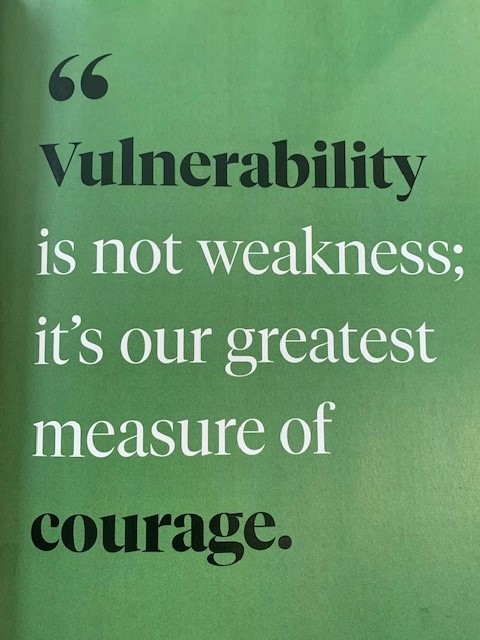Inviting light in challenging times

“What is your relationship to joy?” That question was voiced a few years ago by a colleague as we were talking about work with high emotion. In my work, I’ve got a friendly relationship with some of those intense and difficult emotions; fear, anger grief and anxiety. It’s not often that joy, happiness or excitement is present in my work so the question made me pause and reflect.
I’ve always just assumed that I’ve got a positive relationship with joy and happiness because those are the ‘good’ emotions and what could be hard about being with those? In my life with family and friends I can point to lots of moments of joy and happiness. I look back now and realize that wasn’t my colleague’s question. She asked about my relationship with joy, not whether I have experienced it.
I’ve got intimacy, knowledge and a deep understanding with my own experiences of anger, grief and fear. They are old friends, and I set a place at the table for them. My comfort with them in others feels familiar and cozy, like I know who I am when I am in this space and how to be of service. I know what the emotions feel like, what they want, what they feed on and what settles them down. Like a relationship with a loved one, I travel with them as passengers on my journey.
I realize that I can’t say the same for joy and happiness. I welcome them when they are present, rejoice in their visits, and sometimes plan space for the possibility they can be invited to my table. However, we aren’t intimate or close friends, and I haven’t sought to understand them, cultivate and nurture them. When you work in the shadows of conflict, quelling controversy and calming rage, you devote far more energy and time to building capacity to be with those emotions, and assume joy and positivity will take care of themselves.
I often ask participants in my sessions about their discomfort level with their own high emotions, or the high emotions of others. Most people say that it is something they avoid, or something that is hard for them. Interestingly, they often rate their ability to be with their own emotions as easier than being with the emotions of others. It’s an interesting nuance, and one I’m not sure is true for me. Instead, I see a direct connection to being able to be with your own emotions to being able to be with the emotions of others. But then, it seems I’m intentional about working through anger, fear, grief and anxiety, and less intentional about other emotions. Perhaps, like a mirror I’ve been building my capacity to be with what surrounds me in my work.
Most people have a difficult time with specific emotions; anger, grief, fear and anxiety. Some people will do almost anything not to have to be in proximity to an angry, frustrated person. They struggle with how to respond or how to calm the situation down. Our societal discomfort with grief is so common that people often respond to grief by saying “I’m so sorry” as if we are responsible for the sadness of another. No one is born knowing how to navigate these emotions, and it takes self-awareness, a willingness to be with discomfort and the courage to stay with the suffering to find the insight. Like any relationship, what you put your energy on grows and strengthens.
Our emotions aren’t built in just waiting to be revealed. They are made by us based on context, past experience and interpretation by our brains of what our bodies need in a given situation. An emotion is your brain’s creation of what your bodily sensations mean, in relation to what is going on in the world around you. Neuroscientist Lisa Feldman-Barrett says, “The same brain networks that make emotion also make thoughts and memories and perceptions. Emotion is basically your brain’s way of making sense of the sensory changes that are going on inside your body in relation to what’s going on around you in the world. So, an emotion is your brain making meaning of sensations from the world. It’s not your reaction to the world; it’s your construction of what the world is, what your body is like in the world as it appears to you in that moment.” Emotions are our paths to making meaning, because we interpret and assign meaning to them. Which means we can assign different meanings right?
When we interact with each other, there is you, me and there is also the space around our interaction. So often we put all our emphasis on me or you and neglect what is happening in the space between us and the space around us. Lisa Feldman Barrett also says, “Your brain is not only regulating your body budget; it’s also helping to regulate other people’s, and other people are helping to regulate you. I can sit here and talk to you. I can change what’s happening in your body just by merely speaking a few words. So emotion concepts, and concepts in general, evolved in part because we have to manage our relationships with each other; but as we’re doing that, we are constantly regulating each other’s nervous systems, for good or for ill. The best thing for a human nervous system is another human, but the worst thing for a human nervous system can be another human.”
As social animals, we impact each other. These impacts affect how we experience, interpret and assign meaning to the emotions we experience. I’m coming to realize that decades of work in the space of high emotion, in the space of the ‘dark side’ of anger, fear, grief and anxiety has created strong neural pathways in my brain, strong tracks of meaning about who I am in these interactions and how to interact with others when they experience these emotions. Perhaps my tracks related to joy and positivity aren’t as deeply worn.
When I think about the last 2 years of a global pandemic, it feels like the space around me is worn down, tired, exhausted, burnt out. I’m not alone; so many of my clients, participants and friends are feeling the weight of the space around us. It’s not an anecdotal thing, or just each of us picking up on the energy of each other; The World Economic Forum released its list of the top 10 risks facing the world in 2022. The 4th most severe risk on a global scale over the next 10 years is social cohesion erosion. This risk is the polarization, disconnection, de-humanization we see in the public arena. It is the massive rise in mental health challenges, the despair, anxiety, fear and grief gripping the collective.
To face this challenge, imagine if we each embraced the full spectrum of emotions, inviting lightness as much as dark in these times of challenge? What if we each cultivated joy and positivity as an antidote to fear, grief and anger? What impact might this have on each of us personally and on those around us? In one of my ‘go to’ books in the field, Peter T. Coleman’s ‘The Five Percent: Finding Solutions to Seemingly Impossible Conflicts, he notes, “Pain, misery, loss, loyalty, rage, frustration, fear, anxiety, and despair are the fuel and lifeblood of intractable conflict. Yet decades of research on social conflict has paid little attention to emotions. This has resulted in many practical techniques offering recommendations like 'If you become emotional during conflict, wait until it passes before you act' or 'Rise above your emotions and try to get a rational perspective on the situation.' This advice may be useful when emotions are a passing anomaly or inconvenience as they are in many low-level conflicts. But not with the 5 percent [of conflicts that are intractable]. Not when emotions are basic, not when they are enmeshed within the conflict, not when they ARE the rationale. To really comprehend the 5 percent, we need research models that place emotions at the center. We need models that not only see emotions as the energy behind the conflicts, but also recognize that they create the context through which we experience conflict.”
I’m spending half my time at our home on Wolfe Island these days, taking solace and joy in nature and the water, waiting out another wave of the pandemic. I took the dog out for a walk down our rural road this week, and ran into a neighbour walking her dogs. The wind was blowing snow all around us, and the chill made our faces sting and our eyes water. I was surprised how happy it made me to see another person. I asked her how she was because I know she has experienced some loss and hardship lately. She told me about her challenges, exhaustion and worries. Then she asked me how I was. You can listen to what happened next in this short video clip.

Photo Source: Brene Brown, Atlas of the Heart
I’ve come to the conclusion that with everything going on in the world around us, everything showing up in my work on the ‘dark side’ and everything I’m yearning for personally, that the only way forward is to embrace, invite and encourage joy and positivity into each day, each interaction and into each life we have and every life we touch. That’s my commitment to myself, and to others who are travelling with me. If you want to join me in this quest to balance out the dark side, here is what I’m working on:
- Asking myself questions to integrate the darkness with the light. When I’m felled by despair, grief, fear or anxiety I have been asking myself:
- What wisdom is there for me here?
- What lesson or insight can this moment give me?
- What else do I have within me that I can lean into or draw on?
- What will sustain me to move through this?
- Each day I have been setting an intention to cultivate joy and positivity, to go slow and notice moments of beauty and gratitude around me. I’m noticing when the tomato seeds I planted sprout and taking a few moments to urge them along. I’m saying a prayer to the sun rising and marvelling at the oranges and pinks on the horizon. I’m cozying up next to the fire, snuggling with the dog, reading a good book.
- Each day I have been making small acts of irreverent playfulness. These are small acts that get me out of my head and into my body, that prioritize fun, silliness and joy. These acts look like kitchen dance parties, chasing after balls with the dog, making snow angels after a fresh snow fall, or taking a polar bear dip into the frozen water for the sheer joy of it. These actions create a bubble of joy in my core and press a re-set switch in my mind, inviting lightness.

- When I work with groups, I’ve been asking them to invite joy, positivity and lightheartedness into their interactions too, by:
- Reading a poem, quote or invocation at the start of sessions to set the tone for possibility and to invite in courage, vulnerability and kindness
- Asking people to share what they are grateful for when they introduce themselves as a way of normalizing we all have light along with challenges
- Conducting exercises in brainstorming the most absurd, worst, out-of-the-box ideas you can come up with related to a serious, difficult topic. When we do this before we dive into serious discussions on important issues, it lightens the mood, increases lightheartedness and loosens people’s attachment to being right. Plus it is funny and fun!

Let me know what works for you and how you are going inviting the light in these dark times.
Steph




